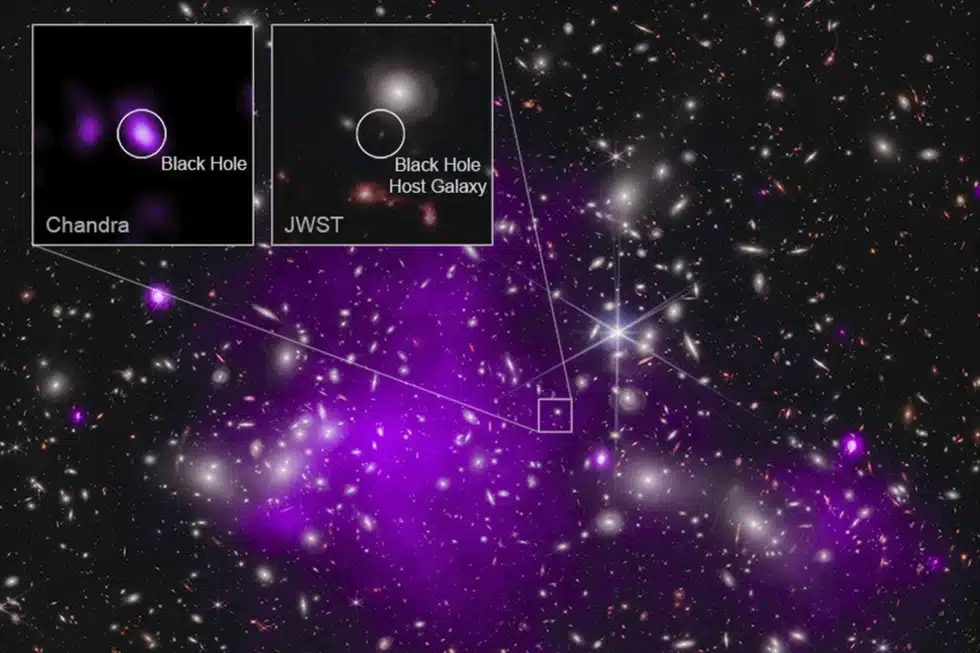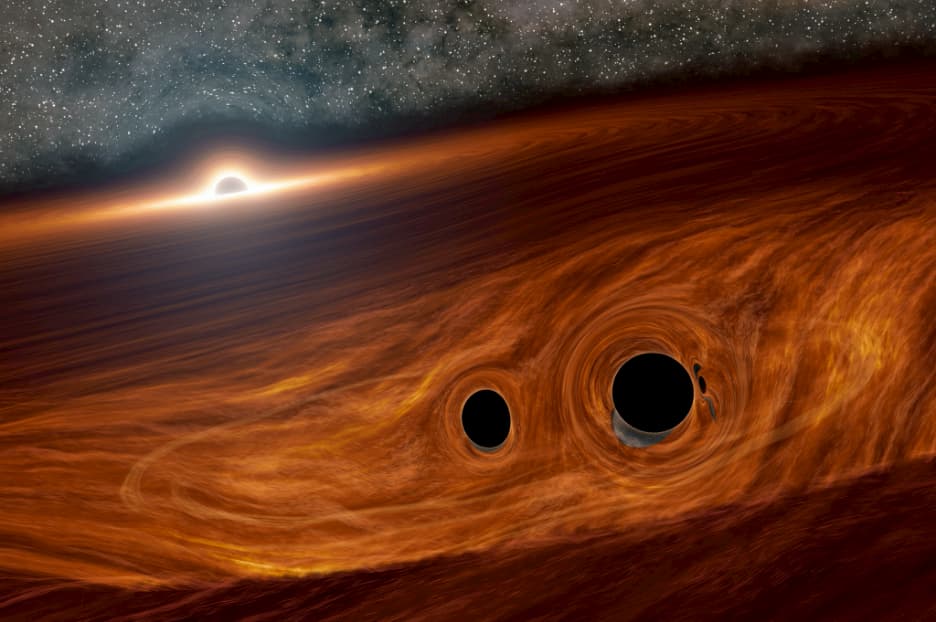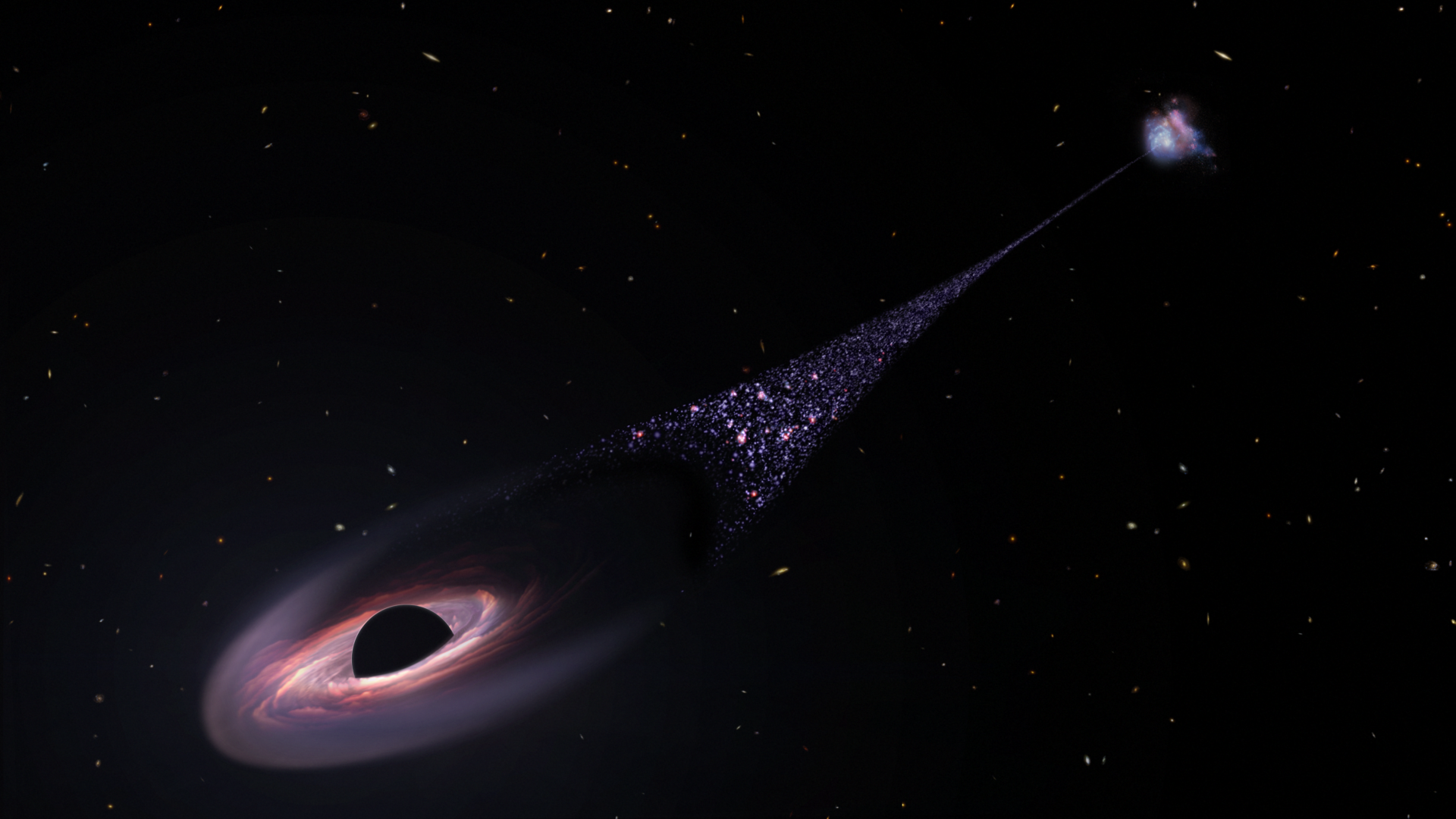Science
Oldest Black Hole Discovered Dating Back To 470 Million Years After The Big Bang

CAPE CANAVERAL, Fla.: Scientists have identified the world’s oldest black hole, a cosmic beast created only 470 million years after the Big Bang.
The findings, released on Monday, confirm previous predictions that supermassive black holes existed at the universe’s beginning. The observations were made by NASA’s James Webb Space Telescope and the Chandra X-Ray Observatory over a year.
Given that the cosmos is 13.7 billion years old, this black hole is 13.2 billion.
Even more startling to astronomers is the fact that this black hole is a whopper – ten times larger than the black hole in our own Milky Way galaxy.
According to senior author Akos Bogdan of the Harvard-Smithsonian Centre for Astrophysics, it might weigh anywhere from 10% to 100% of the mass of all the stars in its galaxy. That is far from the tiny ratio of black holes in our Milky Way and other surrounding galaxies — an estimated 0.1%, he noted.
Oldest Black Hole Discovered Dating Back To 470 Million Years After The Big Bang
“It’s just really early in the universe to be such a behemoth,” said Priyamvada Natarajan of Yale University, who participated in the study published in Nature Astronomy. A companion piece was published in the Astrophysical Journal Letters. “It’s astounding how this thing is sitting in place already with its galaxy so early on in the universe.”
The black hole is thought to have been created from massive clouds of gas collapsing in a galaxy adjacent to one with stars. The black hole gained control once the two galaxies joined.
The fact that Chandra identified it using X-rays shows “without a doubt that it is a black hole,” according to Natarajan. Using X-rays, “you’re capturing the gas that is being gravitationally pulled into the black hole, sped up and it starts glowing in the X-rays,” the scientist explained.
She went on to say that this one is a quasar because it is actively developing, and the gas is blindingly brilliant.
According to scientists, the Webb telescope alone may have discovered a black hole 29 million years old, although it has yet to be viewed in X-rays and verified. Natarajan believes that more early black holes will be discovered – perhaps not as far out, but certainly fairly far away.
“We are expecting a new window to open in the universe, and I think this is the first crack,” she said.
The two space observatories, Webb and Chandra, magnified the region of space where this galaxy, UHZ1, and its black hole are located using a method known as gravitational lensing. The telescopes magnified UHZ1 and its black hole in the background using light from a much closer cluster of galaxies, only 3.2 billion light-years away from Earth.
“It’s a pretty faint object, and thanks to like luck, nature has magnified it for us,” said Natarajan.
Webb is the largest and most powerful astronomical observatory ever sent into space, launched in 2021 to a point 1 million miles (1.6 million km) away; it sees the universe in infrared. The considerably older Chandra spacecraft possesses X-ray vision and was launched into orbit in 1999.
“I absolutely find it amazing that Chandra can do such amazing discoveries 24 years after its launch,” Bogdan said in a statement.
Black holes are regions in space where the gravitational pull is so strong that nothing, not even light, can escape from them. They form when massive stars collapse at the end of their lifecycle. The boundary surrounding a black hole is called the event horizon.
Anything that crosses the event horizon is pulled into the black hole and cannot escape. Scientists continue to study black holes to understand their properties and their role in the universe.
SOURCE – (AP)

































